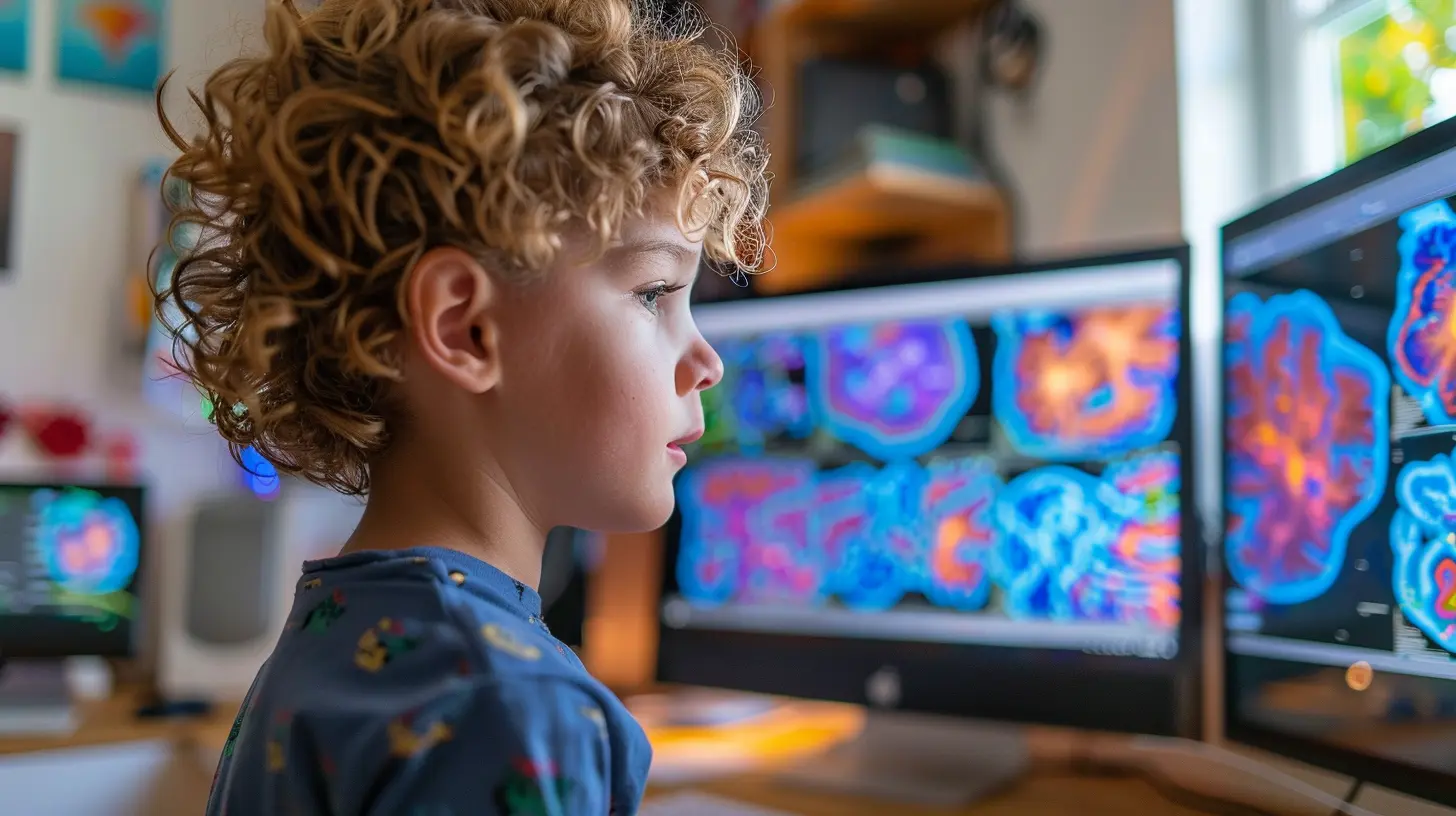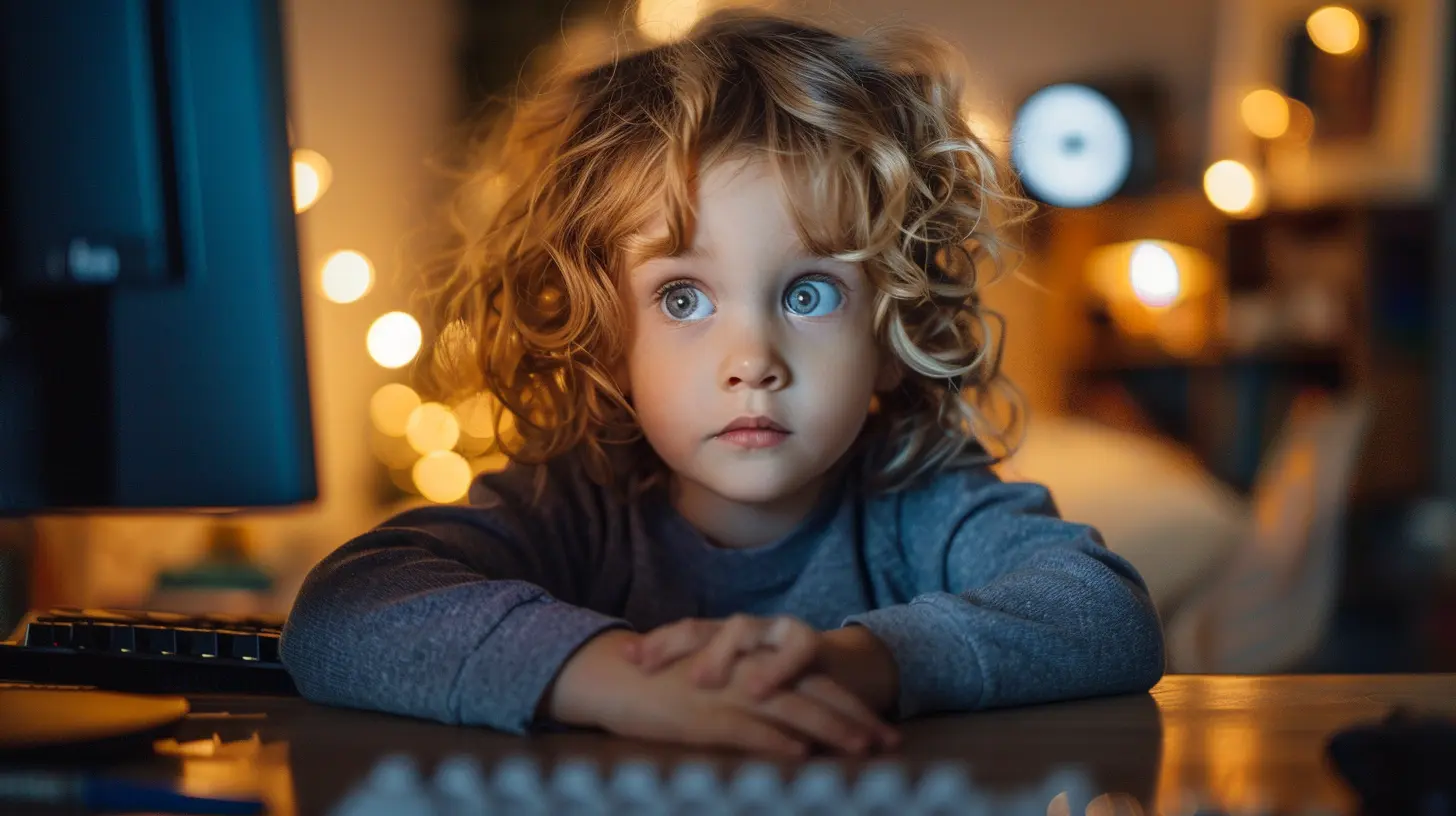Understanding the Science Behind Screen Time and Brain Development
17 November 2025
In today’s digital world, screens are everywhere—phones, tablets, TVs, and computers have become a part of our daily lives. Kids are growing up in a screen-saturated environment, making parents wonder: How does screen time affect brain development?
Some swear by strict screen time limits, while others embrace technology as part of modern learning. But what does science say about how these glowing screens shape young minds? Let’s dive deep into the research and unpack the truth behind screen time and brain development.

The Brain's Growth in Childhood
Before we talk screens, let's first understand a child's brain. The human brain develops rapidly in the early years—around 90% of brain growth happens before age five. This period is crucial because:- Neural connections form at lightning speed.
- Experiences shape cognitive, emotional, and social skills.
- Too much—or too little—stimulation impacts learning and attention.
When children interact with their surroundings, their brains build connections. But here’s the big question: Is screen time stimulating the brain in a beneficial way or causing harm?

What Science Says About Screen Time and Brain Development
1. Screens and Cognitive Development
Research on cognitive development and screen time presents mixed results. Some studies suggest that excessive screen use can delay cognitive skills like problem-solving, language development, and attention span. However, other research shows that the right kind of screen time—like educational content—can enhance learning.So, what makes the difference? Content and context.
- Passive screen time (like watching random cartoons for hours) has little to no benefit.
- Engaged screen time (educational apps, interactive stories, or co-viewing with parents) can boost learning.
2. The Link Between Screen Time and Attention Span
Ever notice how kids who spend too much time on screens struggle to focus in school or during conversations? There's a reason for this.Dopamine, the brain’s “feel-good” chemical, gets released with fast-paced digital content. The flashy colors, quick cuts, and endless scrolling trigger instant gratification. Over time, the brain gets used to this hyper-stimulation, making real-world tasks (like reading a book or sitting through a class) feel dull.
This is why many experts link excessive screen time to a rise in attention disorders like ADHD. The brain starts craving constant stimulation, leading to difficulties in focusing on slower-paced activities.
3. Screens and Sleep Disruptions
Sleep is vital for brain development, but screens can seriously mess with it. The blue light emitted from screens delays the release of melatonin—the hormone that helps us sleep.This means:
- Kids who use screens before bed take longer to fall asleep.
- They get less deep sleep, which is essential for memory and learning.
- Poor sleep leads to mood swings, irritability, and difficulty concentrating.
Experts recommend turning off screens at least an hour before bed to help the brain wind down naturally.
4. How Screen Time Affects Emotional and Social Skills
Too much screen time can impact emotional regulation and social interactions. Children learn empathy, communication, and problem-solving through face-to-face interactions. When screens replace these experiences, kids may:- Struggle with reading emotions and body language.
- Have difficulty handling frustration or boredom.
- Experience higher levels of anxiety and depression (especially with excessive social media use).
It’s not that screens are completely bad. The key is balance—ensuring kids get plenty of real-world interactions alongside their digital experiences.

How Much Screen Time is Too Much?
The American Academy of Pediatrics (AAP) recommends:- Under 18 months: Avoid screens (except for video calls).
- 18-24 months: Limited, high-quality content with parental supervision.
- 2-5 years: No more than one hour per day of quality programming.
- 6 years and older: Screen limits should be set to ensure a healthy balance with physical activity, sleep, and real-world interactions.
It’s not just about counting hours—it’s about how and why kids are using screens.

Practical Tips for Healthy Screen Habits
Now that we know how screens impact brain development, how can we ensure healthy usage?1. Prioritize Quality Content
Not all screen time is equal. Choose educational programs, interactive apps, or creative activities like storytelling or coding games. Avoid meaningless scrolling or mindless cartoons.2. Encourage Co-Viewing
Watching content with your child encourages discussion and critical thinking. Ask questions like, “What do you think will happen next?” or “Why do you think that character felt sad?” This helps develop comprehension and emotional intelligence.3. Set Screen-Free Zones
Create rules like:- No screens during meals (to encourage family bonding).
- No screens in bedrooms (to prevent sleep disturbances).
- No screens during social gatherings (to promote real-world interactions).
4. Encourage Alternative Activities
Replace screen time with activities that boost brain development, such as:- Outdoor play
- Reading books
- Art and creativity
- Board games
- Interactive storytelling
Having a variety of non-digital hobbies makes it easier to avoid screen overuse.
5. Model Healthy Screen Habits
Kids imitate what they see. If they notice parents constantly on their phones, they’ll do the same. Set an example by putting screens away during family time and prioritizing offline activities.6. Use Parental Controls Wisely
Leverage parental controls to regulate the type of content kids consume. Set screen time limits and enforce digital detox days where the entire family engages in tech-free activities.Final Thoughts: Finding Balance is Key
Screen time isn’t all good or all bad—it depends on how it’s used. While excessive, unregulated screen time can harm brain development, structured and educational screen use can support learning and creativity.The most important thing is balance—ensuring kids get plenty of real-world interactions, physical activity, and quality sleep while still benefiting from the digital age.
So, the next time you worry about your child’s screen habits, take a step back. Instead of banning screens altogether, focus on healthy screen time strategies that nurture their brain development without overloading it.
all images in this post were generated using AI tools
Category:
Limiting Screen TimeAuthor:

Karen Hurst

